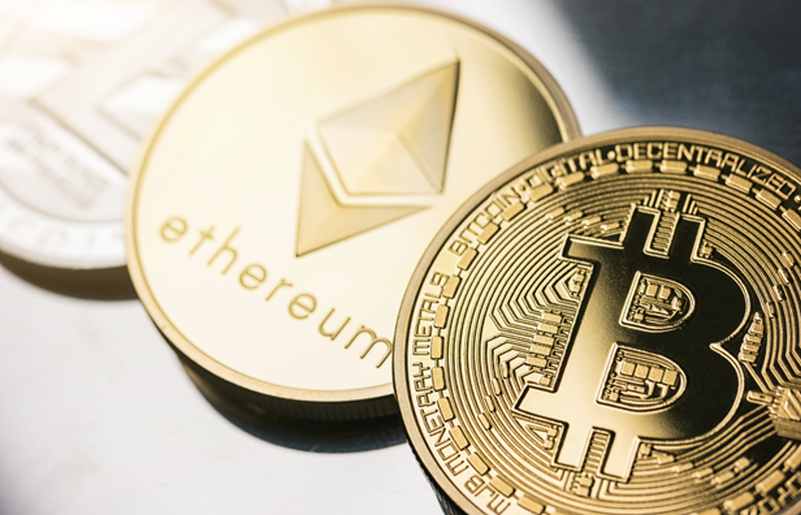The History of NFTs – Bitcoin to Ethereum and Back Again

Hate them or love them, it’s unlikely that you haven’t heard of NFTs in 2022. Even if you don’t regularly move in blockchain spaces, news like one single NFT being sold for $69 million or the Bored Ape Yacht Club potentially receiving a $5 billion valuation have made their way into mainstream media.
Standing for Non-Fungible Token, an NFT is any form of digital asset that cannot be replicated. Due to their uniqueness, there is a natural scarcity, with each asset having value given to them by people who want to own the only original.
But, where exactly do NFTs come from? For the majority of people, they seemed to simply materialize out of nowhere, suddenly starting to reach major media outlets in early 2021. In this article, we’ll be tracing the cyclic history of NFTs, jumping back to 2014, where everything started.
NFTs Started Off With Bitcoin
As NFTs have become incredibly popular online, often sparking heated debates about their utility or purpose, they’ve become particularly famous over the past 18 months. In fact, NFT was actually named the word of the year by Collins Dictionary, demonstrating just how far they have penetrated into mainstream culture.
One of the most frequent discussions around NFTs from those in the blockchain community was the high gas fees caused by Ethereum – which is by far the most used blockchain for NFT minting and distribution. Due to this, most people believe that NFTs must have originated with Ethereum.
This actually isn’t the case, with NFTs being traced back to Bitcoin in 2014. Before they were known as non-fungible tokens, Bitcoin users knew them as Bitcoin assets that were traded, tokenized, and then shared by using Counterparty. Counterparty is a unique protocol that facilitated what we now know as NFTs, and was built using Bitcoin.
However, the rise of large-scale NFT networks and marketplaces didn’t occur until much later.
The Rise of Ethereum in the World of NFTs
While Bitcoin is by far the most successful cryptocurrency, it lacks certain smart contract functions that many other cryptos contain. Due to this, the rapid minting and distribution of NFTs were nearly impossible using the early blockchain ecosystem. Especially looking towards other blockchains like Ethereum, the level of structure provided by their ecosystem covers everything from DeFi protocols to NFT marketplaces, with their more expansive smart contract system powering the way towards progress in these fields.
Due to its more comprehensive blockchain ecosystem, Ethereum quickly rose to capture the vast majority of the NFT market. In fact, at the start of 2021, Ethereum held around 95% of the total market share of all capital produced through the buying, selling, trading, and use of NFTs.
Considering the total value of NFT transactions is well over $17 billion, this is an incredible feat and has certainly been a factor in the high pricing of Ethereum. Ethereum’s ERC-721 token is perfect for NFTs. This token cannot be duplicated, but still provides functionality like trading and other advanced smart contract features.
Due to the inability to clone an ERC-721 token, digital artists can mint their works on one of these tokens, branding it as an NFT. Of course, this is where the idea of fungibility within “NFT” comes from, representing the unique anti-duplication property of the ERC-721.
Ethereum’s availability of ERC-721 tokens waiting to be minted and the advanced smart contract infrastructure of their ecosystem made them the perfect platform for the rise of NFT marketplaces. Even in 2022, while there are some alternatives on Solana and other blockchain layers, Ethereum is still the largest contender in the NFT ring.
The Return of NFTs to Bitcoin’s Ecosystem
While Bitcoin-based NFTs never completely disappeared, they are nowhere near as popular as those based on Ethereum. Central networks like OpenSea have made sure of that, being one of the largest NFT marketplaces in the world and being run on Ethereum’s technology.
However, Bitcoin has very recently announced the launch of a Bitcoin NFT marketplace, with its goal being to take back the market share of NFTs and create the world’s Web3 social hub for NFTs. STXNFT, built on the Stacks programming layer, is directly secured by Bitcoin and will act as the platform for this launch.
They are titling the NFT platform Gamma.io, providing a location within the Bitcoin ecosystem where those interested in NFTs can come to chat, showcase their purchases, trade, and generate excitement around the launch of new projects. Countering the initial limitations that Bitcoin faced in terms of supporting technology for NFTs, Gamma will align itself exactly where Bitcoin’s base layer failed.
By providing a more comprehensive smart contract system, Gamma aims to unlock the potential of Bitcoin, helping it capture the NFT market while also providing a unique space for both individuals and Web3 organizations to discuss digital art. With this arrival, Bitcoin is returning to the NFT space with a bang.
Final Thoughts
The tumultuous history of NFTs seems to be coming full circle, with Bitcoin’s announcement of Gamma providing a stable platform for Bitcoin NFTs to return to popularity. That said, due to the sheer volume of capital that is passed through Ethereum NFT marketplaces, they’re not likely to go anywhere soon.
With the release of Gamma, powered by Stacks, both Ethereum and Bitcoin will now have a viable and stable method of constructing NFT marketplaces. Due to this, we’re likely to see an expansion into Bitcoin and a retraction from Ethereum over the coming months.

